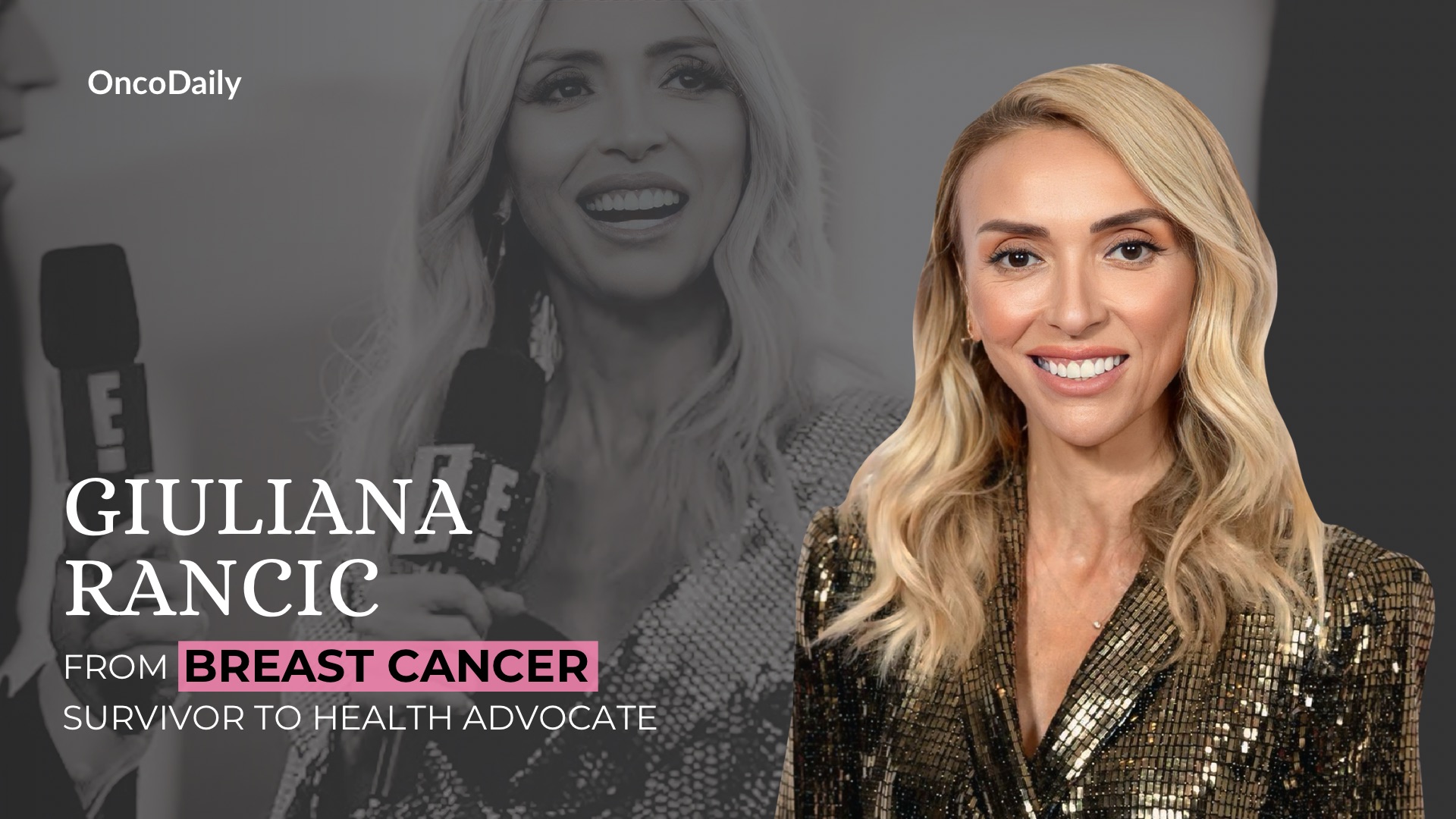Giuliana Rancic is a prominent television personality, recognized for her work as a co-host on E!’s “Fashion Police” and as a correspondent for “E! News.” In 2011, she faced a life-altering moment when she was diagnosed with breast cancer. Choosing to share her journey publicly, Giuliana became a significant advocate for cancer awareness, highlighting the importance of early detection and proactive health measures.
Her story resonates with many, as she emphasized,
“If I can help one person through my story, then I feel like I’ve done my job.”
Through her openness, she has educated the public about the realities of breast cancer, offering hope and inspiration to those facing similar challenges. Giuliana’s experience underscores the power of sharing personal stories in raising awareness and fostering a sense of community in the fight against cancer.
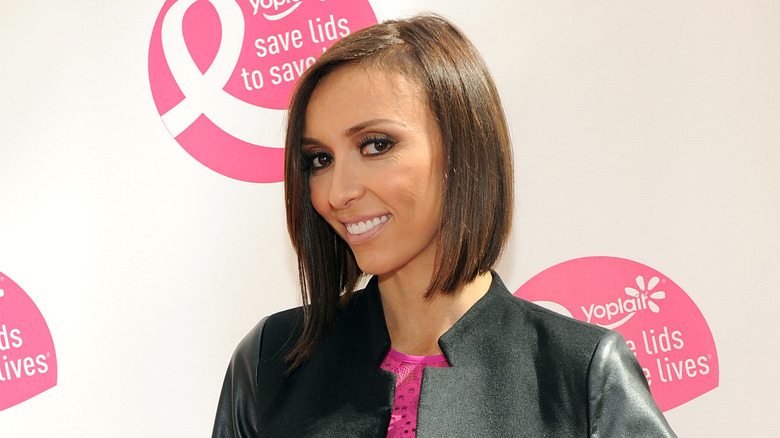
How Did Giuliana Rancic Get Diagnosed with Breast Cancer?
Giuliana Rancic’s breast cancer diagnosis came as a shock during a routine mammogram in 2011, which she underwent at her doctor’s recommendation before starting her third round of in vitro fertilization treatment. Despite having no family history of the disease, the mammogram revealed early-stage breast cancer, leading her to publicly announce her diagnosis on NBC’s Today show. Rancic emphasized the critical role of early detection in her case, stating, “I was very fortunate,” highlighting that her cancer was caught early enough to allow for effective treatment options.
Symptoms
Routine mammograms play a vital role in early cancer detection by allowing for the identification of abnormalities before they develop into more serious conditions. These screenings can detect tumors that are too small to be felt during a physical exam, significantly increasing the chances of successful treatment. Rancic’s experience highlights how proactive health measures can lead to early intervention, which is crucial in improving outcomes for breast cancer patients.
Breast cancer symptoms can vary, but common signs include a new lump or thickening in the breast or armpit, changes in the skin of the breast (such as dimpling or redness), and alterations in the nipple (including discharge, inversion, or scaling). Notable changes in breast size or shape and persistent pain in the breast or armpit may also indicate cancer.
What Were Giuliana Rancic’s Initial Reaction to Her Diagnosis?
Giuliana Rancic’s emotional reaction to her breast cancer diagnosis in 2011 was one of shock and fear, especially as it coincided with her plans for starting a family through in vitro fertilization. She shared the news with her husband, Bill Rancic, during a live taping of the Today show, expressing her initial fears by saying, “I remember being so scared and nervous going into surgery.” However, she found strength in the mantra, “this too shall pass,” which helped her focus on recovery.
What was the Prognosis?
At the time of her diagnosis, doctors indicated that her cancer was treatable but required a comprehensive treatment plan. Early detection played a crucial role in her prognosis; Giuliana had been diligent about her health and regularly underwent mammograms, which allowed for the cancer to be caught at a stage where it was still manageable.
What Treatments Did Giuliana Rancic Undergo?
Giuliana Rancic underwent a double mastectomy and reconstruction surgery following her breast cancer diagnosis in 2011. Initially, she had a lumpectomy, but when it failed to fully remove the cancer, she opted for the more aggressive treatment of a double mastectomy. This decision was influenced by her desire to eliminate the anxiety associated with ongoing monitoring and potential recurrence. Rancic’s husband, Bill, noted that they consulted multiple experts to gather the best information available before making their choice, emphasizing that this option would provide peace of mind.
Double Mastectomy and Reconstruction Surgery
The reconstruction process involved implant-based techniques, where tissue expanders were placed during the mastectomy. These expanders were gradually filled with saline over several months to stretch the skin and prepare for permanent implants. This method allowed for immediate reconstruction, which can shorten recovery time compared to delayed options. Rancic’s choice of reconstruction not only restored her physical appearance but also played a significant role in her emotional recovery, helping her regain confidence after surgery.The implications of a double mastectomy and reconstruction can be substantial. While the surgery reduces the risk of cancer recurrence, it also involves a lengthy recovery period, typically ranging from several weeks to months, depending on individual healing and any additional treatments.
Chemotherapy and Other Treatments
Following this surgery, Rancic faced a difficult recovery period and received radiation treatment as part of her overall care plan. She also took medication for five years to help prevent recurrence.Rancic’s decision for a double mastectomy was influenced by her desire to eliminate the anxiety of regular monitoring and potential recurrence. Her husband, Bill Rancic, highlighted that choosing this route would spare her the stress of frequent mammograms and the worry associated with waiting for results. Rancic remarked,
“I realize how fortunate I am…to have just kind of gotten out of there OK because it is such a major surgery,”
reflecting on her gratitude for early detection and treatment.
How Did Giuliana Rancic Overcome Breast Cancer?
Giuliana Rancic overcame breast cancer both mentally and physically through resilience, strong support from family and friends, and her commitment to advocacy. Her emotional journey involved confronting fears and uncertainties, but she transformed her experience into a platform for raising awareness about breast cancer.
Support from Family and Friends
Bill Rancic took on the role of caregiver when Giuliana was diagnosed with breast cancer in 2011. He described this period as deeply emotional, emphasizing that his primary responsibility was to help Giuliana make informed decisions rather than emotional ones. He noted, “When anyone hears the words ‘you have cancer,’ it’s like a punch in the stomach… You want to surround yourself with someone who can help you think about the process” . Bill’s approach involved being a source of strength and stability, ensuring that Giuliana felt supported throughout her treatment.
In interviews, Giuliana expressed how vital Bill’s presence was, especially during the night when fears often surfaced. She stated,
“You have friends and people you can turn to… but what happens between midnight and 6am? Having someone by your side was very helpful for me” .
This sentiment underscores how essential emotional support is during such trying times.
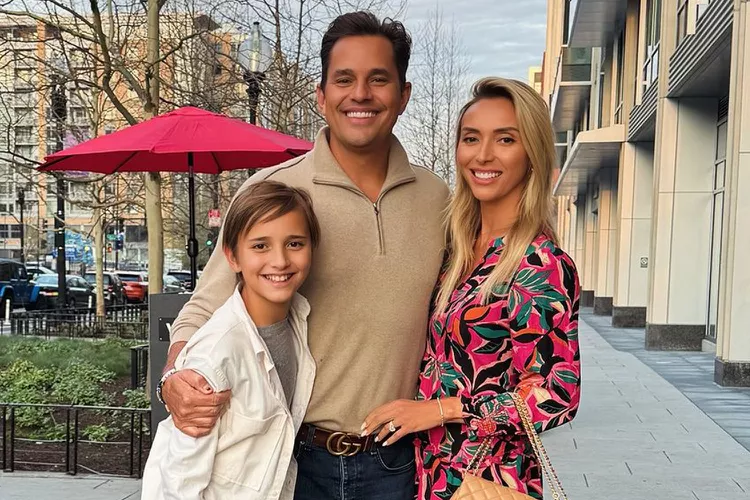
Mental and Emotional Challenges
Upon receiving the diagnosis at age 36, Giuliana described her initial reaction as one of shock. She had just endured a difficult year battling infertility and felt overwhelmed by the weight of another life-altering challenge. This led to feelings of fear regarding her health and future, especially since she had no prior symptoms or family history of breast cancer. She recalled, “It was scary… for a while, I put aside everything to focus solely on my health”
To cope with these feelings, Giuliana focused on gathering information about her condition and treatment options. She and Bill consulted multiple experts to ensure they made informed decisions rather than emotional ones. Bill emphasized the importance of this approach: “You want to surround yourself with someone who can help you think about the process”
How Did Advocacy and Public Awareness Help?
Giuliana Rancic has leveraged her public platform to raise significant awareness about breast cancer, focusing on education, support, and empowerment for women facing similar challenges. After her diagnosis in 2011, she became a vocal advocate for regular mammograms, emphasizing their critical role in early detection. She often shares her personal journey to encourage women to prioritize their health, stating that her own cancer was discovered through a routine mammogram before undergoing fertility treatments.
Public Speaking and Advocacy
- CURE’s Extraordinary Healer® Awards (2019): As the keynote speaker, Giuliana emphasized the importance of community support and early detection in her breast cancer survivorship.
- Avocados From Mexico Cure Bowl: At this college football game, she participated in events raising funds for cancer research and created supportive signs for fellow survivors.
- Joint Speaking Engagements with Bill Rancic: Together, they share their personal experiences on topics like “Through Sickness and in Health,” highlighting the emotional journey of cancer and the importance of support.
Collaborations with Cancer Organizations
Founded by Giuliana after her own breast cancer journey, FAB-U-WISH grants wishes to women undergoing treatment. The initiative aims to uplift these women by fulfilling wishes related to beauty, fashion, and personal experiences, helping them regain confidence during a challenging time.
Giuliana collaborates with The Pink Agenda, which raises funds for breast cancer research and supports those affected by the disease. Together, they work to connect women in need with resources through FAB-U-WISH, ensuring they receive joy and pampering during their treatment journeys.
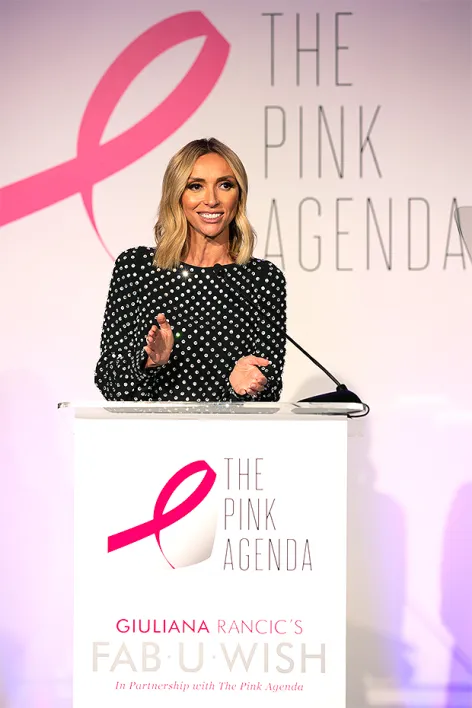
What Is Giuliana Rancic’s Life Like After Breast Cancer?
Giuliana Rancic’s life post-treatment has been marked by continued advocacy for breast cancer awareness and a commitment to maintaining her health while balancing a busy career.Rancic’s determination to help others navigate their cancer journeys reflects her personal experiences, as she understands the emotional and physical toll of the disease. By using her platform, she continues to inspire hope and support for those affected by breast cancer while balancing her career in media and her family life.
Ongoing Health Challenges
After undergoing a double mastectomy and multiple lumpectomies, Giuliana has had to manage the physical recovery from these significant surgeries. Although she expresses gratitude for her decision to have the mastectomy, she acknowledges that recovery was a major undertaking. Additionally, she has been on Tamoxifen since 2012, a medication that can have side effects including weight loss and changes in metabolism, which she continues to monitor closely with her healthcare team . She described a pivotal moment when she looked in the mirror post-treatment and recognized herself again, saying,
“I had lost myself and forgotten who I was because cancer was every second of my day for so long”
What Causes Breast Cancer?
Breast cancer is influenced by a combination of genetic, hormonal, and environmental risk factors.
Genetic and Hormonal Factors
Genetic mutations, particularly in the BRCA1 and BRCA2 genes, significantly elevate breast cancer risk. Women with a BRCA1 mutation have a 55-65% chance of developing breast cancer by age 70, while those with a BRCA2 mutation have a 45% risk (National Cancer Institute, 2021). Family history also plays a crucial role; having a first-degree relative with breast cancer can double a woman’s risk (American Cancer Society, 2022).
Hormones, especially estrogen, are key in breast cancer development. Prolonged exposure to estrogen can stimulate breast cell growth. For example, starting menstruation before age 12 or entering menopause after age 55 can increase risk (World Health Organization, 2019). Studies show that hormone replacement therapy (HRT) can raise the risk of breast cancer by 26% (JAMA Oncology, 2019).
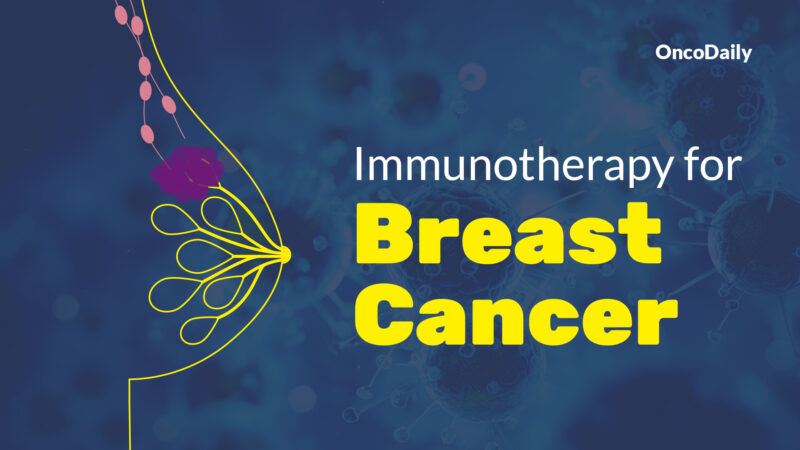
Read more on Novel Therapied in Breast Cancer: Special Article by Oncodaily on Immunotherapy for Breast Cancer
Lifestyle and Environmental Factors
- Diet: Diets high in saturated fats and low in fruits and vegetables increase breast cancer risk. Obesity, particularly post-menopause, is also linked to higher risk (American Cancer Society, 2022).
- Alcohol Consumption: Regular alcohol intake raises risk; women who drink more than one alcoholic beverage daily have a 20-25% higher risk of breast cancer (National Cancer Institute, 2021).
- Physical Activity: Lack of exercise contributes to obesity and hormonal imbalances, increasing risk. Regular physical activity is protective.
- Pollution: Exposure to environmental pollutants, such as pesticides, has been associated with increased breast cancer risk (Environmental Health Perspectives, 2019).
- Radiation Exposure: Previous radiation to the chest area, especially in youth, is a known risk factor (World Health Organization, 2019).
How Can Breast Cancer Be Prevented?
Regular mammograms and other screening methods are vital for the early detection of breast cancer, significantly improving treatment outcomes and survival rates.In addition to regular screenings, specific lifestyle changes can significantly lower the risk of developing breast cancer.
Regular Screenings and Early Detection
BRCA mutations in the BRCA1 and BRCA2 genes significantly increase the risk of breast and ovarian cancers, with lifetime risks of up to 85% for breast cancer and 40-60% for ovarian cancer. Preventive measures include increased screening, risk-reducing surgeries (like prophylactic mastectomy and salpingo-oophorectomy), medications (such as tamoxifen or aromatase inhibitors), lifestyle changes, and genetic counseling.
Annual mammograms are recommended for women aged 40 and older, as early detection can identify breast cancer before symptoms arise. The American Cancer Society reports a 99% 5-year survival rate for localized breast cancer, underscoring the importance of early intervention.
Clinical Breast Exams should be part of routine health check-ups, especially for women at higher risk.
Statistics highlight the importance of early detection. According to the American Cancer Society, when breast cancer is detected at an early stage (localized), the five-year survival rate is an impressive 99%. In contrast, if diagnosed at a later stage (distant), the survival rate drops significantly to 29% (American Cancer Society, 2021). Studies indicate that regular mammography screening can reduce breast cancer mortality by approximately 15-30% among women aged 40-74 (U.S. Preventive Services Task Force, 2016). By prioritizing regular screenings, women can take proactive steps to catch breast cancer early, leading to more effective treatments and better outcomes.
Lifestyle Changes
A healthy diet is crucial for reducing breast cancer risk, emphasizing a focus on fruits, vegetables, whole grains, and lean proteins. Research shows that women who consume a diet high in fruits and vegetables have a 20% lower risk of breast cancer (American Institute for Cancer Research, 2018). Regular exercise is equally important; aiming for at least 150 minutes of moderate aerobic activity each week can lower the risk of breast cancer by approximately 25% (National Cancer Institute, 2020).
Limiting alcohol consumption is also vital, with recommendations to keep intake to no more than one drink per day. Studies indicate that women who consume two to three alcoholic beverages per day have a 20-30% higher risk of developing breast cancer (American Cancer Society, 2021). Maintaining a healthy weight is essential, as obesity is associated with a 30-60% increased risk of breast cancer in postmenopausal women (World Health Organization, 2020). Finally, avoiding tobacco is crucial; quitting smoking significantly lowers the risk of various cancers, including breast cancer, with women who smoke being 25% more likely to develop the disease compared to non-smokers (Cancer Research UK, 2019).
FAQs
When was Giuliana Rancic diagnosed with breast cancer?
Giuliana Rancic was diagnosed with breast cancer on October 17, 2011, after a mammogram required by her fertility doctor prior to undergoing in vitro fertilization (IVF) treatments.
What type of surgeries did she undergo for her breast cancer?
Initially, Giuliana underwent a double lumpectomy, but after the margins were not clear, she opted for a double mastectomy to ensure the cancer was fully removed.
How has Giuliana’s diagnosis impacted her life?
Giuliana has stated that her diagnosis shifted her priorities from trying to conceive to focusing on her health. She has since become an advocate for breast cancer awareness and emphasizes the importance of regular screenings.
What advocacy work has she done since her diagnosis?
Giuliana founded FAB-U-WISH, which grants wishes to women undergoing breast cancer treatment, and has partnered with organizations like The Pink Agenda to raise funds and awareness for breast cancer research.
How does she manage her health post-treatment?
Giuliana continues to monitor her health through regular check-ups every four months and has been on medication since 2012 to manage her condition. She emphasizes the importance of staying informed and getting second opinions when necessary.
What challenges has she faced regarding public perception of her health?
Giuliana has faced scrutiny over her weight and appearance, especially following her treatment. She has addressed concerns about her weight loss due to medication side effects while maintaining a positive outlook on her health journey.
How does she inspire others through her story?
Giuliana shares her experiences through interviews, public speaking engagements, and social media to encourage others facing similar challenges. She often highlights the importance of resilience and support systems during difficult times.
What is her message to women regarding breast cancer awareness?
Giuliana advocates for early detection through regular mammograms and self-exams, urging women to take charge of their health and seek medical advice if they have concerns about their bodies.
What controversy arose from Giuliana Rancic’s comments about Zendaya’s dreadlocks?
In 2015, Giuliana faced backlash for saying Zendaya’s dreadlocks made her look like she smelled of “patchouli oil” or “weed” during Fashion Police. This comment was criticized as racially insensitive, prompting Zendaya to respond publicly. Giuliana later apologized, clarifying her intent was not to offend.
Written by Aharon Tsaturyan, MD
